A concrete fence is used outdoors, so the paint on the surface is selected so that it resists temperature changes, does not absorb or let moisture through. The composition must be frost-resistant, not fade in the sun. You can paint the facade fence with matte or glossy paint, while the color should be combined with the exterior of the house and the landscape of the surrounding area.
Purpose of painting the structure
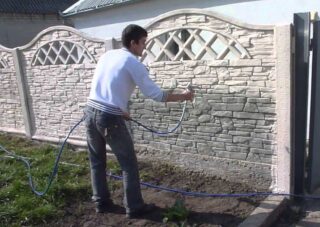
The paint gives additional protection to the surface of reinforced concrete structures from destruction. The surface coating acts as the finishing touch. The faceless gray color of concrete looks unattractive and does not match the modern rich colors of the facade.
The concrete surface fades over time, small and large cracks, chips appear on it, moss grows. After repair, spots and stripes from putty and soil remain on the area of the fence. The fence is painted with various compounds to make the surface uniform, to revive the color.
Other reasons to change the look of your concrete slab fence:
- protection of the plane from the action of solar insolation, which regularly destroys the constituent components of the concrete mixture;
- protection against the negative effects of atmospheric acids, alkalis, metal oxides, exhaust gases (if a highway or a busy highway passes nearby);
- giving individuality to the site and the fence.
Concrete absorbs moisture, and paint on the surface will reduce this ability of the material. The water inside the concrete freezes at negative temperatures, expands, and promotes the formation of cracks. High humidity on warm days of summer causes the multiplication of microorganisms and bacteria. Lichens grow on the fence, as a result, the uniformity of color is disturbed.
Types of paints for concrete work
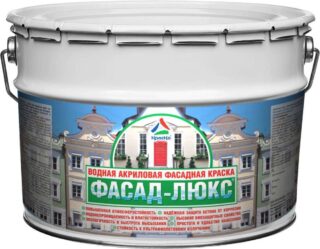
The characteristics of the paint appear after it dries. An additional protective layer appears on the surface.
Types of paints are used:
- Oil. They form a dense waterproof film as a result of oxidative polymerization of oils. It is a good exterior paint product. Diluted with synthetic or combined drying oil, sometimes alkyd resins are used. A wide variety of colors are obtained with the addition of dyes.
- Acrylic. Dries quickly, reliably protect from moisture, resist temperature extremes. The composition is easy to apply, while it does not have an unpleasant odor. Acrylic paints are inexpensive, it is possible to make any color from white using pigments.
- Silicone. Heat-resistant coatings resist moisture at the same time. Elastic compounds fill small cracks, resulting in a smooth surface. Films prevent the appearance of fungus, mold, do not react to ultraviolet rays.
- Latex. They form a tough film with high wear resistance. The surface does not fade, does not get wet. Compositions adhere well to concrete, but differ in increased consumption. The film on the fence can be washed with water from a hose, it will not deteriorate from this.
- Water-epoxy. The paints are available as a ready-to-use solution, or they must be mixed before application. Protect concrete from the action of water, chemical reagents in the atmosphere.They actively resist the action of ultraviolet radiation due to the content of acrylic resins. Durability and good quality are ensured by the introduction of glass particles and silica dust.
The owner chooses how to paint the concrete fence on the street, depending on preference and material capabilities. The compositions have different cost and consumption rates per 1 square of area.
Selection of materials and tools
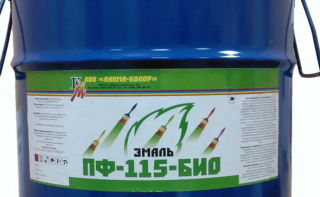
For oil, pentaphthalic compositions, solvents based on solvent, white spirit are used. They can be diluted with acetone-based products (solvent no. 646, 647), but such thinners reduce strength and shine. If drying oil is used, the drying time increases. Oil-based paints set after 36 hours instead of the prescribed days.
The rest of the paints are diluted with water or use means that the manufacturer recommends for a particular type. It is not recommended to add more than 10% water to acrylic, latex and silicate compounds, otherwise the paint will lose its declared characteristics and will poorly cover the surface.
Tools for the job:
- roller and brushes, sometimes a spray gun or spray gun is used;
- painting ditch with an inclined ribbed shelf for squeezing out excess mass;
- rags, glasses, gloves.
The main surface is painted with a roller, hard-to-reach places, for example, side surfaces, cracks, metal profiles of supports, are painted with a brush. The spray gun is bought or rented, if the length of the fence is large, there is a large amount of work.
Use scotch tape of medium width to break off a straight demarcation line, if several areas of different color are provided.
A repair mortar is prepared for cracks, and soil is also acquired.
Surface preparation
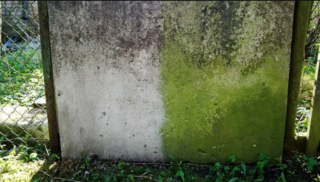
Old coatings on the fence weaken the adhesion of the paint to the concrete, so the layers are removed. This is especially true for lime whitewash, the ingredients of which react with the components of the new coating. Component parts swell, raise the film, which can peel off over time.
Before painting the concrete fence, clean off the old layers with brushes with metal teeth, spatulas. Use means of mechanization in the form of a grinder with a grinding wheel or use a sandblasting unit. For washing, karchers are used, which supply a water jet under high pressure.
After processing, the surface is primed, the chips and cracks that appear are sealed with repair mortar. The composition is sold in bulk, then water is added and mixed until smooth. Use mixtures based on cement, which are used for outdoor work.
You can take a cement-sand mixture at a concentration of 1: 3. Such a solution is pressed into the cracks and is allowed to dry for 24 hours. After that, the repaired area is sanded with emery and primed. For oil, pentaphthalic paints, linseed oil is used as a primer to reduce the consumption of the base paint.
They are primed with special water-based preparations before applying acrylic, silicone, latex and water-epoxy compounds. These products are sold in concentrated form or ready-to-use. The manufacturer indicates the method of dilution on the packaging.
Fence painting technology
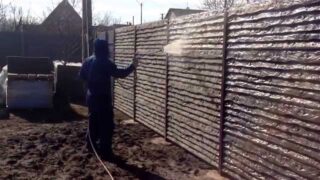
After preparing the area of the fence and the primer, they proceed to painting. It is recommended to apply 2 coats to achieve a quality finish with good protective performance. Sometimes more coats are required if the paint does not cover dark or light spots on the concrete fence.
Paint application procedure:
- the first layer is rolled out with a roller, work begins from above, gradually going down;
- use a brush to paint areas where the roller does not pass;
- wait for the layer to dry;
- the coloring is repeated a second time.
Using a spray gun speeds up work.Apply the composition evenly in a straight line so that the spray torch goes halfway over the strip of the previous pass. The nozzle of the apparatus is located 15 - 20 cm from the plane of the fence. Approaching will lead to the appearance of streaks, removal will impair the quality of work.
Use masking tape separation to paint the concrete stone fence. The strips are glued so as to imitate the shape of individual stones on a plane; these can be elements of the correct configuration or polygons of different sizes.
The gaps between the ribbons are colored brown in different shades. After drying, the strips are peeled off, visually the surface looks like a fence made of separate stones.
Tips for painting concrete fences
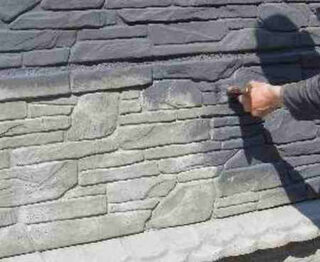
Do not paint if there is fog on the street, a strong wind is blowing or it is raining. Humidity affects the quality of the paint, the wind leads to uneven drying of the surface areas.
To dilute the paint, use only compatible thinners recommended by the manufacturer, otherwise the paint may curl. This will happen if you add white spirit, solvent or drying oil to the nitro enamel.
The amount of paint is calculated, the consumption is 150-200 g per 1 m² per layer, so that you do not have to buy it. If there is not enough and the shade of the newly purchased material does not coincide with the previous one, use the "through the corner" method. Before the turn, one type is applied, and after the turn, the second is applied.
The emerging drips are shaded immediately, since some types of paint dry quickly. Use roller nozzles 25 - 30 cm in size, choose elements with a fleecy surface.








